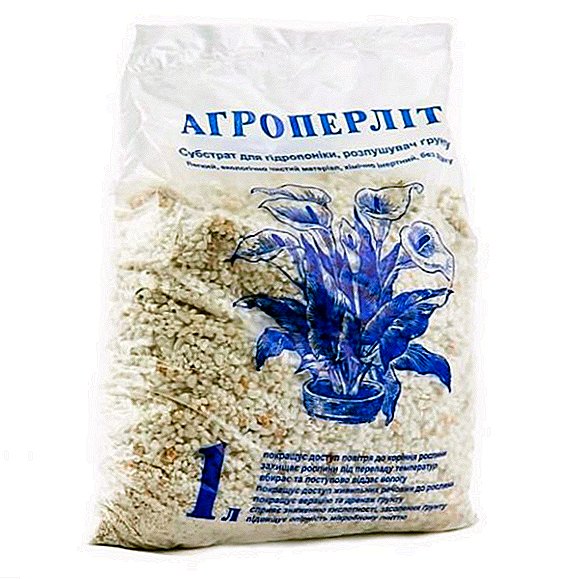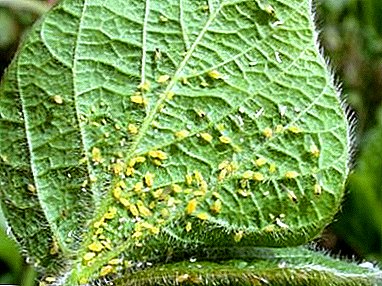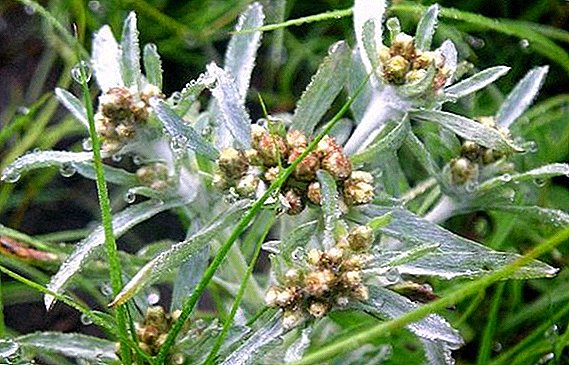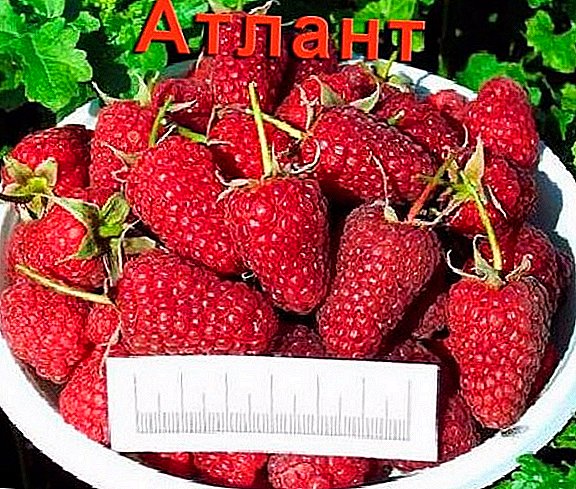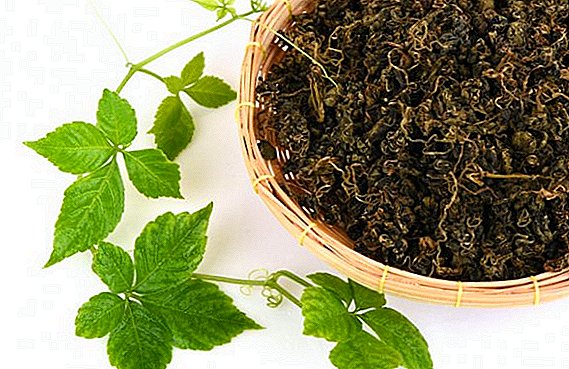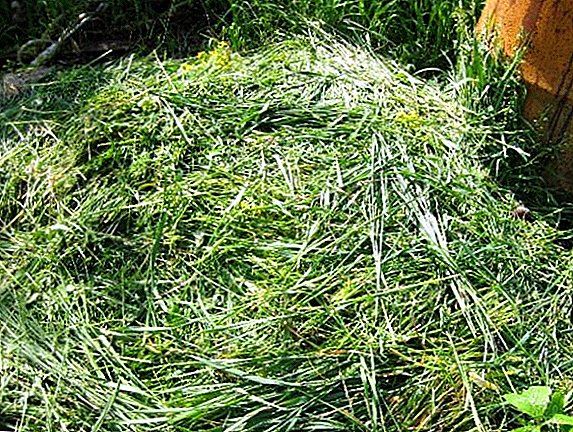 Growing a garden or a vegetable garden is not as easy as it might seem at first glance. For high yield, it is important to observe the mode of care for crops: weeding, watering, feeding. Let's talk about fertilizers, namely green herbal mixtures, in this article.
Growing a garden or a vegetable garden is not as easy as it might seem at first glance. For high yield, it is important to observe the mode of care for crops: weeding, watering, feeding. Let's talk about fertilizers, namely green herbal mixtures, in this article.
What is herbal fertilizer
Grass fertilizer is any herbs that are not grown for cultural use, they are allowed to grow, then mowed and used in the complex care of garden crops. 
The grass can be applied in several options:
- to lay compost, which in time will pick up the maximum amount of substances useful for enriching the soil;
- use as mulch or embed in soil;
- prepare a liquid infusion as a top dressing.
The purpose of this fertilizer is multifaceted:
- soil saturation with nitrogen and organic matter for its fertility;
- the structuring of the soil, that is, giving it looseness, water and air permeability (especially important on heavy clay soils);
- compaction of too loose soils due to organic matter;
- protection of the surface layers of the earth from weathering, leaching of nutrients;
- weed growth suppression.
It will be interesting to learn how to prepare compost in garbage bags, whether it is possible to fertilize the garden with feces, how to use peat, charcoal, rabbit and horse manure as fertilizer.
This can lead to wateriness of the fruit, shedding of color and ovary and other problems. Organic matter in the soil acts slowly, the plant is saturated with small doses. In addition, organics contain the proportion of microorganisms, which helps to improve the structure of the soil. Chemical fertilizers can inhibit soil microflora, moreover, change its acid-base balance.  Among the disadvantages of "green" fertilizer is the fact that some herbs are contraindicated for use as top dressing, so before using such a tool, you need to study the list of unsuitable herbs. For example, the field bindweed decomposes and forms toxic compounds.
Among the disadvantages of "green" fertilizer is the fact that some herbs are contraindicated for use as top dressing, so before using such a tool, you need to study the list of unsuitable herbs. For example, the field bindweed decomposes and forms toxic compounds.
Composting
It is not necessary to dig a hole for laying the compost; you can use some kind of container, for example, a container made of polymer. The following diagram looks like this:
- The container should be placed away from the shelter, in a shady place.
- At the bottom of the tank lay a layer of sawdust and branches with a small amount of earth.
- Then the vegetable layer (grass, leaves, hay, vegetables and fruits) is up to 30 centimeters thick. Plant residues are interspersed with layers of sawdust, which play the role of an air conductor, ensuring uniform "maturation" of all layers.
- Next, you need to mix the layers regularly and moisturize them, but do not overdo it; for compost, both overdrying and excess moisture are bad. In the winter the box is wrapped with a thick layer of straw: the compost should not be frozen.
- Natural cooking will take up to two years, but you can speed up the process and get compost in four to five months by adding chicken manure to the layers.

Compost is used in the garden and in the garden for multiple uses:
- soil application before planting;
- mulching;
- laying in landing holes;
- component of liquid fertilizer in the season.
Important! It is not recommended to lay weeds, perennials, remnants of garden plants, which used herbicides, faeces.
Nettle infusion
For infusion of nettle use both dry and freshly mown nettle. For the manufacture of taking any non-metallic container, then step by step:
- Nettle finely cut, pour water, well heated in the sun, it is better if it is rainwater.
- It is not necessary to fill the bottom, during the fermentation the mass will increase in volume, and it is desirable to cover the mesh with a fine-mesh net so that insects do not fall.
- It is necessary that the tank was in the sun, heat accelerates the process.
- The mixture is stirred daily from top to bottom.
 When the foam ceases to appear on the surface and the color of the nettle liquid becomes saturated dark (after about two weeks), this means that the infusion is ready. Infusion is used for irrigation as a top dressing, before use it is diluted with water one to ten. Most garden crops, as well as earthworms, which contribute to the improvement of soil structure, like nettles.
When the foam ceases to appear on the surface and the color of the nettle liquid becomes saturated dark (after about two weeks), this means that the infusion is ready. Infusion is used for irrigation as a top dressing, before use it is diluted with water one to ten. Most garden crops, as well as earthworms, which contribute to the improvement of soil structure, like nettles.Important! Legumes, onions and garlic react negatively to nettle feeding.
Infusion of weeds
The infusion of weeds is prepared on the same principle as the nettle. Such herbs are suitable for preparation:
- chamomile;
- wild mustard;
- comfrey;
- chaff;
- sagebrush;
- clover.
 In crushed and poured herbs add dolomite flour at a dosage of 1.5 kg per hundred liters. Infusion is used as a fertilizer, and sometimes for the prevention of diseases, for example, an infusion of sow thistles helps to prevent powdery mildew.
In crushed and poured herbs add dolomite flour at a dosage of 1.5 kg per hundred liters. Infusion is used as a fertilizer, and sometimes for the prevention of diseases, for example, an infusion of sow thistles helps to prevent powdery mildew.Pond weeds
If there is a pond or another reservoir with stagnant water near the site, this is a good opportunity to prepare liquid fertilizer from pond weeds, for example, from reeds or sedges. It looks like this:
- Crushed plants are placed in a suitable container, and ordinary weeds are added to them.
- Add half a liter of chicken manure, eight liters of wood ash and a liter of EM fertilizer.
- Pour water under the top. Then stir from time to time.
Did you know? EM-fertilizers - effective microorganisms, began to be mass produced for the agricultural industry, thanks to research by the Japanese scientist Terou Hig. It was he who identified the most effective soil microorganisms and gave rise to the development of technology that is important for agriculture.
Grass fertilizer with added ingredients
Herbal liquid fertilizer can be made even more useful if you add some ingredients. The principle of cooking all the recipes is the same: the herbal raw materials and water are taken as a basis, and then, depending on preferences, the following ingredients are added:
- wet yeast - 50 g, dry - 10 g (this will saturate the mixture with calcium, potassium, sulfur, boron, will give immunity from fungi);
- eggshell - half a bucket or chalk - about three medium slices, additional calcium;
- hay, pereprevaya, allocates a special wand, which destroys pathogenic microorganisms;
- wood ash two or three glasses, fills the earth with potassium, significantly increases the yield.

In what proportions to dilute and when to make
Green fertilizer is used for pre-plantings or crops before planting in the deep fall and early spring. After sowing, young shoots or seedlings under the root are fertilized with nitrogen to accelerate the growth of greenery. For root dressings usually dilute the finished infusion with water in a ratio of one to ten.
For early spring prophylaxis of fungi, cultures are sprayed, spreading liquid top dressing one to twenty. After the formation of the fruit, grass fertilizer with wood ash will accelerate fruiting, make the fruit juicy and large.
Did you know? In the distant past, weaving was woven from nettle, which was very durable. From it sewed sails for sea vessels, bowstring. And in Japan, nettle cloth in combination with silk went for tailoring samurai armor.
Under the winter, infusions do not feed the remaining winter cultures, nitrogen during this period can provoke freezing of the roots. In addition to nutrition, the green mixture copes well with soil deoxidation, as well as the formation of plant immunity against root fungi. The grass mass extracted from the barrel without liquid is used as mulch, nettle is especially valuable in this respect: it scares off such pests as slugs. 
How much is stored "green" fertilizer
"Green" fertilizer should be used within a few days after preparation. The explanation is simple: as a result of fermentation, ammonia is released, which in large quantities causes the death of beneficial microorganisms. That is, the solution will contain some nutrients, but it will not contain the microflora for which it is, in fact, prepared.
Therefore, the finished composition is used, leaving at the bottom a little slurry for the preparation of fresh infusion. You should not leave the prepared slush to sour more than two weeks. More and more summer residents are inclined to use organic compounds for fertilizing on their land. The option of herbal solutions is suitable in this case as it is impossible by the way: cheap, simple and useful.


